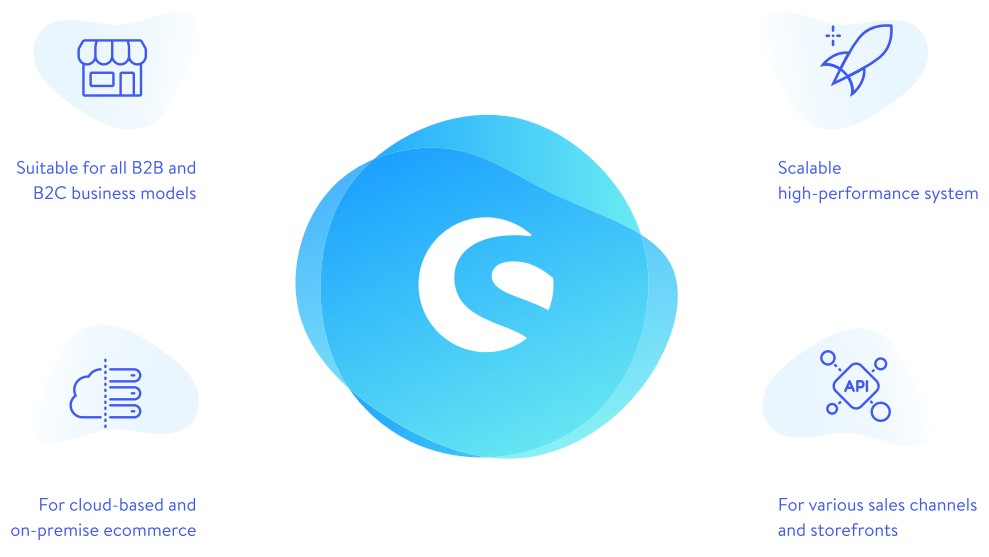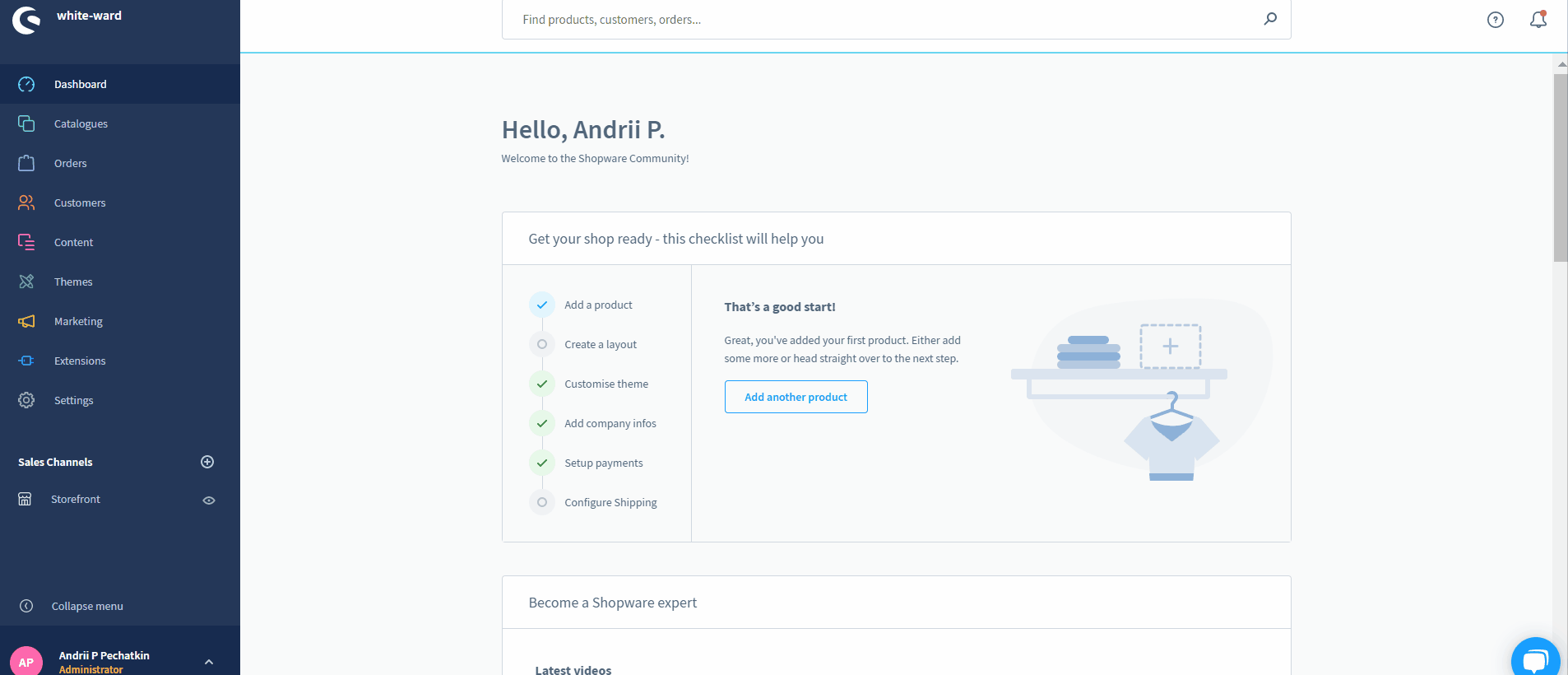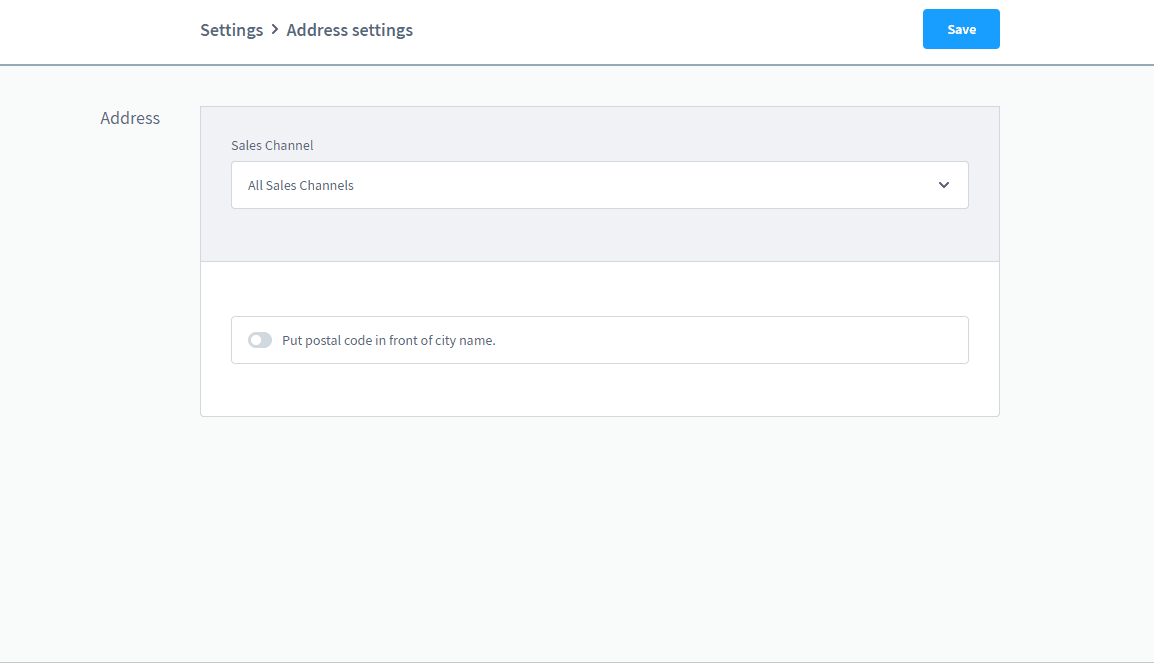
Below, we continue exploring the Shopware 6 administration, and this time our attention is bound to its address settings. In the following article, we explain how to find the Address Settings screen in Shopware 6. Besides, we shed light upon its functions and features. You will learn how to configure address settings in Shopware 6. The system lets you define whether the postal code should be prefixed to the city name or not. If necessary, you can apply different configurations per sales channel. You will find more information below. The last section of this article provides a brief overview of address data import to Shopware 6.
 ‘
‘
Note that we provide Shopware integration with external platforms. Contact our support for further information or try our Improved Import & Export Extension for Shopware.
Get Improved Import & Export for Shopware by Firebear Studio
Explore Shopware

Table of contents
How to Find Address Settings in Shopware 6
As you’ve probably guessed already, the Address Settings screen is situated on the main configuration page of your website. To be more specific, you can open address settings in Shopware 6 as follows:
- Go to your Shopware 6 administration;
- Open its main menu;
- Proceed to the Settings section;
- Open the Shop subsection;
- Hit the Address Settings button.

That’s it! Now, you know how to find address settings in Shopware 6.
Shopware 6 Address Settings Features
The Address Settings section of Shopware 6 only lets you define whether the postal code should be prefixed to the city name. To provide an additional layer of flexibility, the system lets you apply individual configurations for each sales channel.
As a result of such manipulations with settings, your prospects will see the postal code in the storefront in the customer account.
How to Configure Address Settings in Shopware 6
To configure address settings in Shopware 6, you need to select a sales channel and activate/deactivate the Put postal code in front of city name toggle.
By default, the system lets you configure the feature for all sales channels. If you want postal codes to display on specific storefronts, select them from the dropdown. However, you may need to remove the inheritance prior to doing that.

How to Import Address Data to Shopware 6
If you need to import address data to Shopware 6, you’ve come to the right place. Our team lets you simplify and automate various processes associated with data transfers to your e-commerce store. Use our Improved Import & Export Extension for Shopware to import any entity to Shopware 6. Please, contact our support for more details on addresses and postal codes as a transferable entity. The module will help you automate the corresponding import processes. Furthermore, you will be able to create schemes that transform the update with addresses following the Shopware requirements. Our specialists will guide you through these processes and explain how to configure address import properly.
Shopware 6 Essentials FAQ
How to create a Shopware ID?
There is no need to worry about a ShopwareID. The system provides it automatically while you create a Shopware account.
How to create a Shopware account?
Go to a registration page to create a Shopware account. Click the Register Now link and fill in the form. Next, you need to follow the instructions provided in a confirmation email to complete the registration.
What is Shopware master data?
The information that you provide to create a Shopware account is called master data. It consists of addresses, phone numbers, email addresses, and other company details.
How to add a shop in Shopware?
You can add a new Shopware shop in your merchant area. Use the corresponding link situated on the start screen’s right part. Next, you need to specify the type of your new shop. It can be either a cloud storefront or an on-premise installation. Specify the information required during the next steps and save changes.
How to add a payment method to your Shopware account?
You can add a payment method to be able to purchase various tools for your e-commerce website. Under Basic Information -> Accounting, you can select PayPal, credit card, or direct debit as your payment method.
How to create a deposit in Shopware?
Now, when you activated a payment method, it is possible to create a deposit for your Shopware 6 shop. In your Merchant Area -> Shops, choose a shop to provide funds to and hit Open Account Details. The new screen lets you start the money transfer.
How to purchase Shopware extensions?
It is possible to purchase extensions and themes in Shopware 6 with the help of the following two tools: Shopware Marketplace and Plugin Manager. Create a deposit that covers your purchase amount, choose a software solution you want to buy, and complete the purchase.
How to get support in Shopware?
Write to info@shopware.com or call +49 2555 9288 50 if you have questions regarding your account or license. Contact Shopware support at financial.services@shopware.com and +49 2555 9288 510 if you have questions regarding accounting and financial services.
How to migrate to Shopware 6?
Since migration to any e-commerce platform is a very complex routine, we recommend using a third-party tool to achieve the best results. Pay attention to the Improved Import & Export extension for Shopware 6 since it offers lots of benefits over the default tools. With our module, you can transfer core entities to your new website from any external system. Besides, you can conduct the migration from Shopware’s previous versions. Also, note that we offer export solutions for other e-commerce platforms so that you can easily transfer data from Magento, Shopify, and other systems to Shopware 6. Contact our team for more information.
How to automate import and export processes in Shopware 6?
The Improved Import & Export extension for Shopware 6 simplifies regular data updates and transfers from your e-commerce website. You can create a schedule of import and export processes per each data transfer and let the extension launch the corresponding procedure according to the specified time frames.
How to integrate Shopware 6 with external systems?
The Improved Import & Export extension also delivers integrations with various external platforms and systems, such as ERPs, CRMs, accounting tools, and others. The module automates repetitive import and export processes using cron-based schedules and modifies data according to the requirements of your Shopware store with the help of presets. You can also use schemes to map data upon export with the help of the same technology.
Get Improved Import & Export for Shopware by Firebear Studio
Explore Shopware
 ‘
‘



